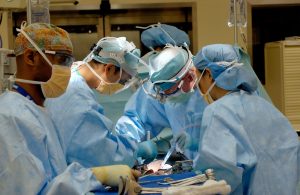The presence of toenails and fingernails extends beyond mere aesthetic adornments, delving into the intricate realm of scientific significance. These seemingly simple structures play pivotal roles in our daily lives, contributing to functions that range from protection and sensory enhancement to fine motor skills.
This article aims to unravel the mysteries behind why we have toenails and fingernails, exploring their composition, evolutionary journey, and the multifaceted purposes they serve in our overall well-being.
Key Takeaways
- Composition of Nails: Nails are primarily made of keratin, a fibrous protein also found in hair and skin, forming a tough protective covering.
- Structural Components: The nail unit comprises the nail plate, matrix, bed, and cuticle, each playing a distinct role in nail health and function.
- Functions of Nails: Nails provide protection, enhance sensory perception, improve grip and manipulation, and have social and aesthetic significance.
- Continuous Growth: Fingernails grow continuously due to specialized cells in the nail matrix, influenced by genetics, age, and overall health.
- Evolution from Claws: The transition from claws to nails in mammalian evolution is linked to lifestyle changes, emphasizing precision in activities.
- Survival Without Nails: While not indispensable for basic survival, the absence of nails would impact fine motor skills, protective functions, and overall hand functionality.
- Health Indicators: Changes in nail color, texture, and shape can provide clues to underlying health conditions, though they are not standalone diagnostic tools.
Why We Have Toenails and Fingernails?
Nails, both on our fingers and toes, serve more than just aesthetic purposes. These seemingly simple structures play crucial roles in our daily lives, providing protection, aiding in sensation, and assisting in various activities. This article explores the scientific insights into why we have toenails and fingernails, delving into their composition, and elucidating the key functions they perform.
What are Nails Made of?
To understand the purpose of nails, it’s essential to first examine their composition. Nails are primarily composed of a protein called keratin. Keratin is a fibrous structural protein that also makes up our hair and the outer layer of our skin. The keratin in nails is densely packed, forming a tough and protective covering.
The nail unit consists of several parts:
- Nail Plate: This is the visible, hard part of the nail. It is composed of tightly packed, dead keratinized cells.
- Nail Matrix: The matrix is the tissue beneath the nail where new nail cells are generated. It plays a pivotal role in determining the shape and thickness of the nail.
- Nail Bed: The nail bed is the skin beneath the nail plate. It is rich in blood vessels, providing nutrients to the growing nail.
- Cuticle: The cuticle is a thin layer of tissue that protects the nail matrix. It prevents bacteria and fungi from entering the nail unit.
Functions of Toenails and Fingernails
- Protection: Nails act as a protective barrier, shielding the sensitive tips of our fingers and toes. Without this sturdy covering, the fingertips and toe tips would be more susceptible to injuries, infections, and external stresses.
- Sensory Function: The fingertips are densely packed with nerve endings, and the nails contribute to our tactile sense. They enhance our ability to feel and manipulate objects, providing sensory feedback that aids in tasks requiring precision.
- Grip and Manipulation: Nails improve our ability to grasp and manipulate objects. They provide a counterforce to the fingertips, enhancing our dexterity. This evolutionary advantage has played a crucial role in the development of fine motor skills in humans.
- Scratching: Nails are an evolutionary adaptation that allows humans and many other animals to scratch various surfaces. This behavior serves hygiene purposes, helping to remove dirt and parasites from the skin.
- Social and Aesthetic Functions: Throughout history, nails have also served social and aesthetic functions. In many cultures, well-maintained nails are considered a sign of good hygiene and grooming. Additionally, nail ornamentation has been a part of cultural practices and personal expression.
Why Do Nails Grow Continuously?
Fingernails grow continuously due to the activity of specialized cells in the nail matrix, which is the base of the nail where new cells are produced. The nail matrix contains keratinocytes, which are cells that produce keratin, a tough protein that forms the structure of nails. As these keratinocytes multiply, older nail cells are pushed out towards the fingertips and harden, forming the visible part of the nail.
The growth of nails is influenced by various factors such as genetics, age, hormonal changes, and overall health. Typically, fingernails grow at an average rate of about 1/8 inch (3 mm) per month, and toenails tend to grow more slowly.
The continuous growth of nails is part of the body’s natural process of renewal and repair. Nails serve protective functions for the fingertips, and their growth is a dynamic and ongoing biological process.
Did We Have Claws Instead of Nails?
In the evolutionary history of mammals, including humans, the transition from claws to nails represents a significant adaptation. Early mammalian ancestors likely had claws, which were useful for activities such as climbing, grasping, and defense. However, as primates, including humans, adapted to different ecological niches, the structure of their digits and nails underwent changes.
The transition from claws to nails is associated with a shift in lifestyle and behaviors. Claws are typically sharp, curved structures that are well-suited for activities such as climbing trees and catching prey. Nails, on the other hand, are flatter and less curved. This change in morphology is related to a shift toward activities that require more precision, such as manipulating objects and tools.
The development of nails in primates, including humans, is thought to be linked to the evolution of a more complex and versatile hand. Nails provide a broader, flatter surface than claws, allowing for more precise gripping and manipulation of objects. This adaptation has played a crucial role in the development of fine motor skills, which are essential for activities like tool use and craftsmanship.
While claws might be advantageous in certain ecological contexts, nails have proven to be highly beneficial for humans in terms of adaptability and versatility. The functions of nails, as mentioned in the previous article, include protection, sensory function, grip, manipulation, and more. Nails contribute to the overall dexterity and functionality of the human hand.
Do We Need Nails to Survive?
In terms of survival, while humans could theoretically survive without nails, their absence would likely impact various aspects of daily life. Tasks requiring fine motor skills, such as writing, typing, or using tools, would become more challenging. The protective function of nails, shielding the fingertips, would also be compromised, potentially increasing the risk of injury and infection.
In essence, while nails may not be indispensable for basic survival, they are integral to the intricate and versatile capabilities of the human hand. The evolutionary transition from claws to nails reflects the adaptability of primates, particularly humans, in different environments and lifestyles.
What Would Happen If We Didn’t Have Fingernails?
If humans didn’t have fingernails, several consequences would arise:
- Loss of Protective Function: Fingernails serve a protective function by covering the fingertips, which are rich in nerve endings. Without nails, the fingertips would be more exposed to external elements, increasing the risk of injuries and making the fingertips more sensitive.
- Reduced Grip and Manipulation: Nails provide additional surface area to the fingertips, enhancing grip and manipulation. Without nails, the ability to grasp and handle objects with precision would be compromised, impacting activities that require fine motor skills.
- Impaired Sensory Function: The nails contribute to the tactile sense of the fingertips by enhancing sensitivity. Without nails, the fingertips would lose some of their ability to discern textures and details in the surrounding environment.
- Increased Vulnerability to Infections: Nails act as a barrier, preventing dirt and microorganisms from entering the sensitive areas around the fingertips. Without nails, the risk of infections, such as those caused by bacteria or fungi, would likely increase.
- Altered Aesthetic and Cultural Practices: Fingernails have cultural and aesthetic significance in many societies. The absence of nails would impact practices related to grooming, ornamentation, and self-expression.
- Changes in Fine Motor Skills: The absence of nails could influence the development of fine motor skills, as the structure of the hand and fingers has evolved to work in conjunction with nails. Tasks that require precision, like writing or typing, might become more challenging.
Can Fingernails Predict Health?
While fingernails themselves cannot predict health with absolute certainty, they can provide some clues or indications about certain aspects of a person’s well-being. Changes in the color, texture, or appearance of the nails may be associated with various health conditions. Here are some examples:
- Color Changes:
- Yellowing: It might be a sign of a fungal infection, psoriasis, or respiratory disease.
- Pale or White: This could indicate anemia, malnutrition, or liver disease.
- Blueish or Purple: Poor circulation or a sign of oxygen deprivation.
- Texture Changes:
- Brittle Nails: Can be linked to nutritional deficiencies or thyroid issues.
- Pitting: Small dents or pits may be associated with psoriasis.
- Shape Changes:
- Clubbing: Enlarged fingertips and curved nails may be a sign of lung or heart disease.
- Spoon Nails: Concave or “spoon-shaped” nails can be indicative of iron deficiency anemia.
- Other Signs:
- Changes in Thickness: Could be related to circulation problems or fungal infections.
- Nail Bed Changes: Swelling or changes in the nail bed can sometimes signal underlying health issues.
However, it’s important to note that these changes in the nails are not diagnostic on their own. They should be considered in the context of other symptoms and a person’s overall health. Many nail changes are benign and could be caused by factors such as trauma or aging.
Best Practices for Nail Care
- Maintain Good Hygiene: Regular cleaning and trimming of nails contribute to overall hygiene and prevent infections.
- Balanced Nutrition: Adequate intake of nutrients, especially those beneficial for hair and nails, supports their health.
- Protective Measures: Use gloves when engaging in activities that may expose nails to potential harm.
- Regular Moisturization: Keep nails and cuticles moisturized to prevent dryness and brittleness.
- Avoid Nail Biting: Breaking the habit of nail-biting helps maintain the structural integrity of nails.
- Limit Use of Harsh Products: Reduce exposure to harsh chemicals, as they can damage nails and cuticles.
- Monitor Changes: Pay attention to any unusual changes in nail color, texture, or shape and consult a healthcare professional if needed.
Final Thoughts
In conclusion, our nails, composed primarily of keratin, serve multifaceted roles in protection, sensory function, and fine motor skills. The evolutionary shift from claws to nails highlights the adaptability of primates, particularly humans, in diverse environments. While not essential for survival, the absence of nails would significantly impact daily activities, emphasizing their integral role in human functionality.
Also Read: Sole Rejuvenation: Unveiling the Wonders of Foot Peel Masks
FAQs
- Q: What is the primary composition of nails?
- A: Nails are primarily composed of keratin, a fibrous structural protein.
- Q: Why do nails grow continuously?
- A: Fingernails grow continuously due to the activity of specialized cells in the nail matrix, producing keratin.
- Q: Can humans survive without nails?
- A: While not essential for basic survival, the absence of nails would impact various aspects of daily life, especially fine motor skills.
- Q: How do nails contribute to sensory function?
- A: Nails enhance sensory perception in the fingertips, aiding in tasks requiring precision and tactile feedback.
- Q: What is the evolutionary significance of the transition from claws to nails?
- A: The shift from claws to nails reflects a move towards activities requiring more precision and versatility in hand function.
- Q: What practices promote nail health?
- A: Maintaining good hygiene, balanced nutrition, and protecting nails from potential harm are essential for nail health.
- Q: Can changes in nail appearance indicate health issues?
- A: Yes, changes in nail color, texture, or shape can provide clues to underlying health conditions, although they are not standalone diagnostic tools.








No comment yet, add your voice below!